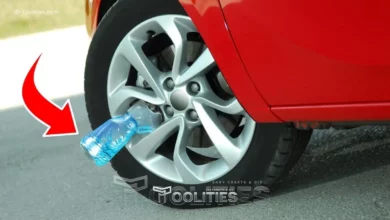Lower Car Insurance Rates: How to Save on Your Auto Insurance
When it comes to car insurance, finding ways to lower your rates can save you a significant amount of money. Lower car insurance rates not only help you reduce your monthly expenses but also provide financial security in case of unforeseen events. In this article, we will explore various strategies and tips on how to save on your auto insurance rates while maintaining adequate coverage. Let's dive in and discover how you can save on your auto insurance.
Factors Affecting Car Insurance Rates
Several factors influence car insurance rates, and understanding them can help you make informed decisions to reduce your premiums. Some key factors include:
- Driving Record: A clean driving record with no accidents or traffic violations demonstrates your responsible behavior on the road. Insurance companies reward safe drivers with lower rates.
- Vehicle Type and Model: The type and model of your car play a role in determining insurance rates. Typically, vehicles with advanced safety features and lower theft rates tend to have lower insurance premiums.
- Age and Gender: Younger, inexperienced drivers often face higher insurance rates due to their higher risk profile. Additionally, statistics show that certain age groups and genders have higher accident rates, impacting insurance costs.
- Location and ZIP Code: Your geographical location can affect your car insurance rates. Urban areas with higher population densities and higher crime rates often result in higher premiums.
- Credit Score: Insurance companies may consider your credit score when calculating rates. Having a strong credit score showcases your financial accountability and can lead to obtaining more affordable insurance rates
Ways to Lower Your Car Insurance Rates

Now that we have explored the key factors that affect car insurance rates, let's delve into actionable tips to help you lower your premiums:
- Comparison Shopping: One of the most effective ways is by comparing quotes from multiple insurance providers. Each company uses different algorithms to calculate rates, so shopping around allows you to find the best deal that suits your needs.
- Increasing Deductibles: Opting for a higher deductible can significantly lower your insurance premiums. A deductible refers to the sum you must personally cover before your insurance coverage takes effect. It is crucial to ensure that you have the financial means to handle a higher deductible in the event of a claim.
- Maintaining A Good Credit Score: As mentioned earlier, a good credit score can positively impact those rates. Make sure to pay your bills on time, keep your credit utilization low, and regularly monitor your credit report for any errors or discrepancies.
- Bundling Insurance Policies: Consider bundling your car insurance with other insurance policies, such as homeowner's or renter's insurance, with the same provider. Insurance companies often offer discounts when you have multiple policies with them.
- Installing Safety Features: Equipping your vehicle with safety features such as anti-theft devices, airbags, and automatic seat belts can lower your insurance premiums. These features reduce the risk of theft, injury, or damage, making your car less of a liability to insure.
- Taking Defensive Driving Courses: Completing a defensive driving course demonstrates your commitment to safe driving practices. Many insurance companies offer discounts to drivers who have completed approved defensive driving courses.
Understanding Deductible Auto Insurance Coverage
To make informed decisions about your car insurance coverage, it's crucial to understand the different types of coverage available. Here are the main types of car insurance coverage:
- Liability Coverage: Liability coverage protects you financially if you cause an accident that results in injuries or property damage to others. It typically includes bodily injury liability and property damage liability.
- Collision Coverage: Collision coverage pays for the repairs or replacement of your vehicle if it is damaged in a collision with another vehicle or object, regardless of who is at fault.
- Comprehensive Coverage: Comprehensive coverage protects against non-collision incidents such as theft, vandalism, natural disasters, or damage from falling objects. It covers the cost of repairs or replacement of your vehicle.
- Personal Injury Protection (PIP): PIP coverage, also known as no-fault insurance, covers medical expenses and related costs for you and your passengers, regardless of who is at fault in an accident.
- Uninsured/Underinsured Motorist Coverage: This coverage protects you if you are involved in an accident with a driver who has insufficient or no insurance. It helps cover your medical expenses and property damage.
Usage-Based Insurance Programs
Usage-based insurance programs have gained popularity in recent years as a way to potentially lower car insurance rates. These programs use telematics technology to track your driving behavior and offer personalized rates based on your actual driving habits. Here's how usage-based insurance works and its benefits:
How Usage-Based Insurance Works:
Usage-based insurance programs use a device installed in your vehicle or a mobile app to collect data on factors such as mileage, speed, braking patterns, and time of day you drive. The data collected is used to determine your insurance rates.
Benefits of Usage-Based Insurance:
By participating in a usage-based insurance program, you have the opportunity to showcase safe driving habits and potentially earn lower premiums. It encourages responsible driving behavior and can lead to significant savings.
Factors Considered in Usage-Based Insurance:
Insurance companies consider various factors when calculating rates in usage-based insurance programs. These factors may include mileage, driving speed, hard braking events, and the time of day you typically drive. By demonstrating safe driving habits, such as maintaining steady speeds, avoiding sudden stops, and driving during less congested times, you can potentially diminuate the insurance rates.
Defensive Driving and Driver Safety
Practicing defensive driving techniques not only promotes safety on the road but can also help reduce your car insurance rates. Here's why defensive driving matters and some essential techniques to incorporate:
Importance of Defensive Driving:
Defensive driving involves being proactive, alert, and prepared for potential hazards on the road. By anticipating and avoiding dangerous situations, you can minimize the risk of accidents and subsequent insurance claims.
Defensive Driving Techniques:
- a. Maintain a safe following distance: Keep a safe distance from the vehicle in front of you to allow for adequate reaction time.
- b. Use your mirrors and check blind spots: Continuously monitor your surroundings and be aware of other vehicles to prevent collisions.
- c. Avoid distractions: Eliminate distractions while driving, such as using mobile devices, eating, or engaging in other activities that divert your attention from the road.
- d. Obey traffic laws: Adhere to speed limits, traffic signals, and road signs to prevent accidents and traffic violations.
- e. Stay alert and focused: Be aware of your surroundings, including pedestrians, cyclists, and other vehicles. Avoid driving under the influence of alcohol or drugs.
- f. Adjust to road conditions: Adapt your driving to weather conditions, road construction, and other factors that may affect safety.
- g. Signal and communicate effectively: Use turn signals, hand signals, and headlights to communicate your intentions to other drivers.
Discounts and Savings Opportunities to Lower Your Car Insurance

Insurance companies offer various discounts and savings opportunities that can help you save on your insurance rates. Here are some common discounts to explore:
- Good Driver Discounts: Maintaining a clean driving record, free of accidents and traffic violations, can qualify you for good driver discounts. Insurance companies reward safe drivers with reduced premiums.
- Multi-Policy Discounts: If you have multiple insurance policies with the same provider, such as home insurance or life insurance, you may be eligible for a multi-policy discount. Bundling your policies can lead to significant savings.
- Low Mileage Discounts: If you drive fewer miles than the average driver, you may qualify for a low mileage discount. Insurance companies consider low mileage as an indicator of lower risk, leading to potential savings.
- Safety Features Discounts: Vehicles equipped with advanced safety features, such as anti-lock brakes, airbags, and electronic stability control, may be eligible for discounts. These features reduce the likelihood of accidents and injuries, making your car less costly to insure.
- Student Discounts: Full-time students with good academic standing may be eligible for discounts on their car insurance. Insurance companies recognize responsible student behavior as an indicator of lower risk.
- Occupational Discounts: Certain professions or occupational groups may qualify for specific discounts. For example, teachers, military personnel, or first responders often receive discounts due to their profession's perceived lower risk.
Maintaining a Good Credit Score
Your credit score can play a significant role in determining your insurance rates. It's essential to understand how credit scores impact insurance premiums and take steps to maintain a good credit score:
Understanding Credit Score Impact on Insurance Rates:
Insurance companies consider credit scores as an indicator of risk. Studies have shown a correlation between creditworthiness and the likelihood of filing insurance claims. Individuals with higher credit scores are perceived as lower-risk and may receive lower insurance premiums.
Tips for Improving and Maintaining a Good Credit Score:
- a. Pay bills on time: Timely payment of bills, including credit card payments, loan installments, and utility bills, demonstrates financial responsibility.
- b. Reduce debt and credit utilization: Keep your credit card balances low and aim to reduce overall debt to improve your credit score. High credit utilization can negatively impact your score and, consequently, your insurance rates.
- c. Monitor your credit report: Regularly check your credit report for any errors or discrepancies. Dispute any inaccuracies and work on resolving them promptly.
- d. Avoid opening unnecessary credit accounts: Opening multiple credit accounts within a short period can negatively affect your credit score. Only apply for credit when necessary.
- e. Maintain a diverse credit mix: Having a mix of credit types, such as credit cards, loans, and a mortgage, can demonstrate your ability to manage different types of credit responsibly.
Choosing the Right Car Insurance Provider (Compare Rates)
Selecting the right car insurance provider is crucial to ensure you receive competitive rates, excellent customer service, and reliable coverage. Consider the following factors when choosing an insurance company:
- Researching Insurance Companies: Conduct thorough research on insurance companies to evaluate their reputation, financial stability, and customer satisfaction ratings. Look for companies with a strong track record and positive reviews.
- Checking Customer Reviews and Ratings: Reading customer reviews and ratings can provide insights into the experiences of other policyholders. Pay attention to feedback regarding claims handling, customer service, and overall satisfaction.
- Assessing Financial Stability: Check the financial ratings of insurance companies through independent rating agencies. A financially stable company is more likely to fulfill its obligations and provide reliable coverage.
- Evaluating Customer Service: Consider the quality of customer service offered by insurance companies. Prompt and helpful customer support can make a significant difference when you need to file a claim or seek assistance.
Reevaluating Car Insurance Coverage Regularly
It's essential to review your car insurance coverage regularly to ensure it aligns with your changing needs and circumstances. Consider the following:
- Reviewing Policy Annually: Schedule an annual review of your car insurance policy. Take into account any changes in your driving habits, vehicle value, or personal circumstances that may warrant adjustments to your coverage.
- Adjusting Coverage Based on Changing Needs: Evaluate whether your current coverage adequately protects your vehicle and financial interests. Consider factors such as the age of your vehicle, your driving patterns, and your overall risk tolerance. Adjust your coverage accordingly to avoid overpaying for unnecessary protection or being underinsured.
Recap
Lowering your car insurance rates is an achievable goal with the right strategies and knowledge. By implementing the tips discussed in this article, such as comparison shopping, increasing deductibles, and maintaining a good credit score, you can take control of your car insurance costs.
Additionally, understanding the different types of coverage, exploring usage-based insurance programs, practicing defensive driving techniques, and taking advantage of discounts and savings opportunities can further contribute to lower premiums.
Regularly reviewing your coverage and choosing a reputable insurance provider are vital steps in ensuring you receive the best value for your car insurance. By being proactive and informed, you can secure lower rates while maintaining adequate coverage and peace of mind on the road.
Q: How can I lower my car insurance costs?
A: There are a variety of ways to lower the costs, including raising your deductible, maintaining a good driving record, and shopping around for the best rates.
Q: What factors affect my car insurance premium?
A: Your car insurance premium is affected by factors such as your driving record, age, gender, location, type of car you drive, and the coverage options you choose.
Q: How can I shop around for the best car insurance rates?
A: You can shop around for the best rates by getting quotes from several insurance companies and comparing the coverage options and rates.
Q: What are some ways I can save on car insurance?
A: Some ways to save on car insurance include taking advantage of insurance discounts, maintaining a good driving record, choosing a higher deductible, and getting quotes from several insurance companies.
Q: Do car insurance discounts really help lower my insurance rate?
A: Yes, car insurance discounts can help lower your insurance rate by reducing the overall cost of your premium.
Q: What are some common car insurance discounts?
A: Common car insurance discounts include good driver discounts, good student discounts, multiple vehicle discounts, and safety feature discounts.
Q: How does my driving record affect my car insurance premium?
A: Your driving record can affect your car insurance premium by causing it to increase if you have traffic violations or accidents, or by causing it to decrease if you have a good driving history.
Q: What is collision and comprehensive coverage?
A: Collision and comprehensive coverage are types of insurance that cover damages to your car in the event of an accident, theft, or other covered event.
Q: What are some ways to lower my car insurance costs if I am a new driver?
A: Some ways include taking driver's education courses, maintaining a good driving record, and choosing a car that is cheaper to insure.
Q: How can I make sure I am getting the best car insurance coverage for my needs?
A: You can make sure you are getting the best car insurance coverage for your needs by working with an experienced insurance agent, researching different types of insurance, and getting quotes from several insurance companies.




🚗 Ready to slash your car insurance rates? 💰 Check out this guide by TooliTies for tips on lowering premiums without sacrificing coverage! 🛡️ Dive in and discover the secrets to affordable auto insurance. 🌐
https://www.toolities.com/lower-car-insurance-rates/
#toolities #CarInsurance #MoneySaver #DriveSafe #InsuranceTips #AutoCoverage #SavingsGuide #TooliTiesTips
Attractive section of content. I just stumbled upon your web site and in accession capital
to assert that I get actually enjoyed account your blog posts.
Anyway I will be subscribing to your feeds and even I achievement
you access consistently quickly.
Thanks very nice blog!
You actually make it seem so easy with your presentation but I find this topic to be actually something that I think I would never understand.
It seems too complicated and extremely broad for me.
I’m looking forward for your next post, I’ll try to get the hang of it!
Thanks for one’s marvelous posting! I definitely
enjoyed reading it, you’re a great author. I will make sure to bookmark your blog and definitely
will come back later in life. I want to encourage yourself to continue your great posts,
have a nice morning!
Thanks for one’s marvelous posting! I actually enjoyed reading
it, you might be a great author. I will be sure to bookmark
your blog and definitely will come back someday. I want to encourage you continue your
great job, have a nice holiday weekend!
Sweet blog! I found it while surfing around on Yahoo News.
Do you have any tips on how to get listed in Yahoo News? I’ve been trying for a while but I never seem to get there!
Appreciate it
Great post. I was checking constantly this blog and I am impressed!
Very useful info specifically the last part 🙂 I care for such info much.
I was seeking this particular information for a long time.
Thank you and good luck.
Simply want to say your article is as astounding.
The clarity in your post is just great and i can assume you are an expert on this subject.
Well with your permission allow me to grab your feed to keep up to date with forthcoming post.
Thanks a million and please keep up the gratifying work.
I was wondering if you ever considered changing the structure of your website?
Its very well written; I love what youve got to say. But maybe you
could a little more in the way of content so people could connect with
it better. Youve got an awful lot of text for only having 1 or two pictures.
Maybe you could space it out better?
Hello, I read your blog on a regular basis. Your story-telling style is
awesome, keep doing what you’re doing!
excellent submit, very informative. I’m wondering why the opposite experts of
this sector don’t notice this. You must proceed your writing.
I am sure, you have a great readers’ base already!
Thank you for every other informative site. The place else
may I get that type of information written in such a perfect method?
I have a project that I am just now operating on, and I’ve been at the glance out
for such information.
First off I want to say excellent blog! I had a quick question that I’d like to ask if you don’t mind.
I was curious to find out how you center yourself and clear
your mind before writing. I’ve had a difficult time clearing my mind in getting my ideas out.
I do take pleasure in writing however it just seems like the first 10 to 15 minutes are generally lost simply just trying to figure out how
to begin. Any recommendations or hints? Thanks!
I truly love your website.. Very nice colors & theme.
Did you create this amazing site yourself? Please reply back as I’m planning to credate my own personal wsbsite and want to
fid out were you got this from or what the theme is named.
Many thanks!
Hi, I do think this is a great blog. I stumbledupon it 😉 I will
come back yet again since i have book-marked it. Money and freedom is the greatest way to change, may you be rich and continue to guide others.
Wow, this article is fastidious, my sister is analyzing these things, so I am going to tell her.
What i do not realize is in fact how you’re not really a lot more well-liked than you may be right now.
You’re so intelligent. You already know therefore considerably relating to this subject, produced me personally believe it from a lot of various angles.
Its like women and men are not fascinated except it is one thing to do with Lady gaga!
Your own stuffs outstanding. All the time care for it
up!
First of all I would like to say great blog! I had a quick question that I’d like to
ask if you don’t mind. I was interested to
find out how you center yourself and clear your mind before
writing. I’ve had difficulty clearing my mind in getting my
ideas out. I do take pleasure in writing however it just seems like the first 10
to 15 minutes are usually lost just trying to figure out how to begin. Any recommendations or tips?
Cheers!
Hello to every one, the contents present at this
web page are really remarkable for people knowledge, well,
keep up the good work fellows.
Great post. I was checking constantly this blog and I’m impressed!
Extremely helpful info specifically the last part
🙂 I care for such information much. I was looking for this particular info for
a very long time. Thank you and best of luck from Danmark.
I think this is among the most significant information for
me. And i’m glad reading your article. But want to
remark on some general things, The site style is ideal, the articles is really
excellent : D. Good job, cheers
I couldn’t resist commenting. Exceptionally well written!
I was suggested this blog by my cousin. I’m not sure whether this post is written by him as nobody else know such detailed about my trouble.
You are amazing! Thanks!
Howdy very cool website!! Man .. Beautiful ..
Wonderful .. I’ll bookmark your blog and take the feeds additionally?
I am glad to search out numerous useful information right here within the
put up, we want develop more strategies on this regard,
thank you for sharing. . . . . .
bookmarked!!, I like your website!
I am really enjoying the theme/design of your blog.
Do you ever run into any browser compatibility problems?
A small number of my blog audience have complained about my blog not working correctly in Explorer but looks
great in Safari. Do you have any ideas to help fix this problem?
Excellent post. Keep writing such kind of
information on your site. Im really impressed by your blog.
Hi there, You’ve done an incredible job. I will definitely digg it and personally suggest
to my friends. I’m sure they’ll be benefited from this web site.
Hey there! I’m at work browsing your blog from my new iphone 3gs!
Just wanted to say I love reading through your blog and look forward to all your posts!
Carry on the outstanding work!
Wow, awesome blog layout! How long have you been blogging for?
you make blogging look easy. The overall look of your website is fantastic, as well as
the content!
Thanks, very nice blog!
great publish, very informative. I’m wondering why
the other experts of this sector don’t realize this. You
should proceed your writing. I’m sure, you have a huge readers’ base
already!
There is definitely a lot to know about this topic. I like all of the points you’ve made.
Nice blog here! Also your web site loads up
fast! What web host are you using? Can I get your affiliate link to your host?
I wish my site loaded up as quickly as yours lol
Hi, this weekend is nice in support of me, because this point in time i
am reading this impressive informative post here at my house.
After checking out a number of the blog articles on your
web site, I truly appreciate your way of writing a blog.
I book marked it to my bookmark website list and will be checking
back soon. Please visit my website too and tell me what you think.
After going over a handful of the articles on your web page, I truly appreciate your technique of blogging.
I book-marked it to my bookmark website list and will be checking back in the near future.
Take a look at my web site too and let me know your opinion.
Do you mind if I quote a couple of your articles, as long as I provide credit and sources back to your blog?
My blog site is in the exact same area of interest
as yours and my users would certainly benefit from a lot of the information you present here.
Please let me know if this alright with you. Many thanks!
Do you have any video of that? I’d want to find out more details.
Wow, awesome weblog structure! How lengthy have you
been running a blog for? you made blogging look easy.
The whole look of your site is great, as smartly as the content material!
You’re truly a good webmaster. The site loading pace is amazing.
It seems that you’re doing any distinctive trick.
Furthermore, The contents are masterwork. You have done a wonderful job on this matter!
Hello there! I could have sworn I’ve visited your blog before
but after looking at many of the articles I realized it’s new to me.
Regardless, I’m certainly happy I stumbled upon it
and I’ll be bookmarking it and checking back often!
Your means of describing everything in this article is genuinely fastidious, every one can without difficulty
understand it, Thanks a lot.
Greetings! Very helpful advice within this article!
It is the little changes which will make the most important changes.
Thanks for sharing!
Great delivery. Solid arguments. Keep up the good spirit.
Good day! I simply wish to give you a big thumbs up for your excellent
info you have right here on this post. I’ll be coming back to your site for more soon.
It’s going to be ending of mine day, except before end I am reading this impressive piece
of writing to increase my experience.
It’s very straightforward to find out any matter on web as compared to textbooks, as I found this piece of
writing at this web page.
It’s nearly impossible to find knowledgeable people
on this topic, however, you sound like you know what you’re talking about!
Thanks
You need to be a part of a contest for one of the most
useful sites on the web. I’m going to recommend this site!